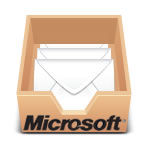Microsoft Exchange 2010 and the Archiving Misconception
With the release of Exchange 2010, I’ve heard an incredible amount of buzz regarding their archiving feature. When your career centers around the world’s number one email archiving product, people tend to ask you questions when Microsoft decides to dip their ten-ton toe into your waters. The bulk of the curiosity, of course, centers around whether or not Symantec should be worried. More specifically, it begs the question,
“If Exchange has its own archiving, why should I bother buying extra software?”
Well my friend, that’s a very good question. Seeing as the answer might have me training for other work, I figured I’d better do some research.
What I’d found was rather typical of any first attempt Microsoft makes at an application or feature: Namely, it falls short of its goal. Not to say that there aren’t some good aspects of Exchange 2010 archiving mind you; the retention and discovery features seem to be quite innovative and a massive improvement over Exchange on its own. Unfortunately, that’s where the archiving functionality ends. One of the most critical components of archival and content management, that of storage management, is left out of the Exchange Archiving equation.
When it comes to archiving, the best products are the ones that provide a wide range of storage options. We’re dealing with centralized control of a company’s unstructured information after all, and these days that sort of data easily runs into the Terabytes for even the smaller organizations. If you’re forced to stick to a certain type of storage – particularly the more expensive, higher performing storage – for data that isn’t necessarily accessed that often, you are essentially wasting money in hardware you don’t need.
With Exchange 2010 archiving, the ‘archive’ provided for each user mailbox is essentially an extra mailbox. This mailbox, surprisingly enough, not only has to reside on the same storage device as the user’s mailbox, but in the same Information Store as well! I find this particularly dumbfounding, as Mailbox Archiving was originally designed to keep information store sizes as small as possible. The Information Store is a database, after all, and a database simply performs better when it’s smaller. It seems incredibly counter-intuitive then, to double your mailboxes within a store, call them archives, and then encourage email hoarding  by dumping older emails into those secondary mailboxes. No matter the claims Microsoft makes as to their information stores handling much more capacity, I still can’t see it as a good idea to encourage IS growth!
by dumping older emails into those secondary mailboxes. No matter the claims Microsoft makes as to their information stores handling much more capacity, I still can’t see it as a good idea to encourage IS growth!
All other features aside – And I could easily argue that Enterprise Vault outperforms the new Exchange archiving features – this Exchange storage issue is a deal-breaker as archiving solutions go. Enterprise Vault’s ability to archive email and other content to flat-file storage and away from database structures affords it a much greater capacity per server, while allowing for much cheaper, lower-performing devices than could be viable on an Exchange 2010 server. Taking into account the extra Enterprise CAL’s involved with their archiving and the extra servers and storage required, organizations can still see significant ROI’s when utilizing Enterprise Vault’s archiving. Add to that the advantages of compression and single-instancing across all other types of Enterprise Vault archiving, and the storage savings becomes that much more significant.
Suffice to say, I don’t plan on looking for other work any time soon.

6 comments